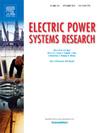On the application of the branch DistFlow using second-order conic programming in microgrids
IF 3.3
3区 工程技术
Q2 ENGINEERING, ELECTRICAL & ELECTRONIC
引用次数: 0
Abstract
In recent years, the Second-Order Conic Programming (SOCP) model of Distribution Power Flow (DistFlow) has been widely adopted in operation and planning studies of distribution systems due to its simplicity for various applications compared to other convex models. It provides a relaxed convex formulation of DistFlow equations to ensure the feasibility of solutions. This Paper investigates the performance of the SOCP model in Microgrids (MGs) and Active Distribution Systems (ADSs). It identifies scenarios where the SOCP model results in incorrect solutions, implying that it does not necessarily guarantee solution feasibility. Mathematical proofs are also presented to demonstrate that the SOCP DistFlow is not completely capable of maintaining the security of MGs and ADSs. Due to the high popularity of the SOCP model over other DistFlow models in the literature, an effective algorithm is proposed for the SOCP model to ensure the consistency of solutions in MGs and ADSs, regardless of operational conditions. The convergence of the proposed algorithm to the optimal solution is mathematically proved. The results are verified using OpenDSS software. The results demonstrate that the proposed algorithm enhances convergence speed and accuracy, while maintaining the simplicity needed for practical use in operation and planning studies.
求助全文
约1分钟内获得全文
求助全文
来源期刊

Electric Power Systems Research
工程技术-工程:电子与电气
CiteScore
7.50
自引率
17.90%
发文量
963
审稿时长
3.8 months
期刊介绍:
Electric Power Systems Research is an international medium for the publication of original papers concerned with the generation, transmission, distribution and utilization of electrical energy. The journal aims at presenting important results of work in this field, whether in the form of applied research, development of new procedures or components, orginal application of existing knowledge or new designapproaches. The scope of Electric Power Systems Research is broad, encompassing all aspects of electric power systems. The following list of topics is not intended to be exhaustive, but rather to indicate topics that fall within the journal purview.
• Generation techniques ranging from advances in conventional electromechanical methods, through nuclear power generation, to renewable energy generation.
• Transmission, spanning the broad area from UHV (ac and dc) to network operation and protection, line routing and design.
• Substation work: equipment design, protection and control systems.
• Distribution techniques, equipment development, and smart grids.
• The utilization area from energy efficiency to distributed load levelling techniques.
• Systems studies including control techniques, planning, optimization methods, stability, security assessment and insulation coordination.
 求助内容:
求助内容: 应助结果提醒方式:
应助结果提醒方式:


